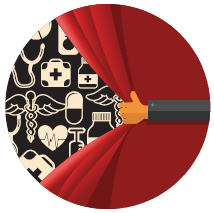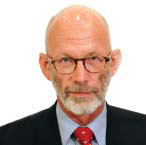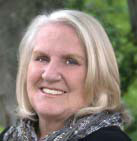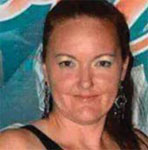A Behind-The-Scenes Look At The Patient Clinical Trial Experience
By Rob Wright, Chief Editor, Life Science Leader
Follow Me On Twitter @RfwrightLSL
“When I got ill, it was completely by surprise,” says Dr. Jan Vesseur. The former general practitioner who now works as a civil servant for the Netherlands Ministry of Health was on a skiing trip in France when a fall forever changed his life. “My daughter, also a doctor, was with me,” he recalls. “The fall was very soft, and we couldn’t believe it was anything other than some low-back pain.”
 When he got back to the Netherlands, he visited his physician, who referred him for an X-ray. “That was the first time I saw the broken vertebra, and that was almost a week after I fell.” Ironically, it turns out having a broken back would be the least of his concerns. For within the damaged vertebra, there was a tumor, multiple myeloma. “I had to decide about two treatments, one for the spine and one for the cancer,” he states. According to Vesseur, most people with multiple myeloma are diagnosed after a few years of minor complaints (e.g., tired, some back pain), with most doctors finding nothing. “No one thinks about examining the M protein [monoclonal immunoglobulin] that is the marker for this disease,” he states. Due to the fall, Vesseur was fortunate to find out that he was in the very early stages of his illness. Despite being a healthcare provider, he admits that, prior to the diagnosis, he knew a little about multiple myeloma, but not the details, and definitely not all the possible treatments. While he explored his options, Vesseur was approached by his oncologist about the possibility of something he had never previously considered — participating in a clinical trial.
When he got back to the Netherlands, he visited his physician, who referred him for an X-ray. “That was the first time I saw the broken vertebra, and that was almost a week after I fell.” Ironically, it turns out having a broken back would be the least of his concerns. For within the damaged vertebra, there was a tumor, multiple myeloma. “I had to decide about two treatments, one for the spine and one for the cancer,” he states. According to Vesseur, most people with multiple myeloma are diagnosed after a few years of minor complaints (e.g., tired, some back pain), with most doctors finding nothing. “No one thinks about examining the M protein [monoclonal immunoglobulin] that is the marker for this disease,” he states. Due to the fall, Vesseur was fortunate to find out that he was in the very early stages of his illness. Despite being a healthcare provider, he admits that, prior to the diagnosis, he knew a little about multiple myeloma, but not the details, and definitely not all the possible treatments. While he explored his options, Vesseur was approached by his oncologist about the possibility of something he had never previously considered — participating in a clinical trial.
For the biopharmaceutical industry, the clinical trial is the backbone of its R&D engine. Despite the U.S. pharmaceutical industry spending nearly 40 percent of its collective clinical trial budget on patient enrollment, recruitment and retention for trials has been declining. It is estimated that nearly two out of every 10 trials never manage to enroll a single patient. Would you be surprised to learn that only 3 percent of cancer patients like Vesseur, a pretty highly motivated group, participate in clinical trials? To reverse this trend, biopharma has adopted the concept of creating patient-centric clinical trials. This model supposedly only initiates a trial site after at least one interested, pre-identified patient is found. One of the stated benefits of this model is that the trial sponsors can avoid the cost of establishing a site that may never enroll a participant, and thus are better able to funnel resources to more worthwhile study centers. The fact that the focus remains on how the sponsor will benefit makes me wonder if this approach is missing the patient-centric point. I recently interviewed three people, including Jan Vesseur, about their decision to participate in a trial/study. What follows is a look into their firsthand experiences.
THE “SUBJECT” OF A MULTIPLE MYELOMA TRIAL IN THE EU
At the time of his diagnosis, March 2012, Jan Vesseur was a 60-year-old married father of three. The standard therapy for his condition is to start chemotherapy, and after that, get a stem cell transplant. The clinical trial Vesseur was considering involved the use of bortezomib for the treatment of multiple myeloma without stem cell transplantation. “There were two arms in the study, one with the stem cell transplantation and one without. I hoped I could get the arm without the stem cell transplant. My thinking was that if I reacted well on the drug, a stem cell transplant would not be necessary. If I didn’t do well on bortezomib alone, I could always leave the trial and still get my stem cell transplant.” In his opinion, the trial gave him the opportunity to get better treatment for his illness.

"I will take part in a trial again, because I know the relevance of participating."
DR . JAN VESSEUR
Vesseur’s decision to participate in a clinical trial first involved a lot of reading and research as well as giving an informed consent. “They gave me a lot of paper information about the trial. Even for me, as a physician, it was very difficult to read and understand.” Vesseur consulted with his oncologist and even some former medical colleagues. “Still, I didn’t feel like I had all the information, and it was very difficult to foresee all the consequences of deciding to take part.” Ultimately, he chose to participate in the trial, due in part to the fact that he felt his treatment and the development of his illness would be followed more closely as a result of being part of a trial.
Vesseur doesn’t view his trial participation as burdensome. “Undergoing blood and bone marrow examinations were a normal part of therapy,” he says. “Though they warned me that, due to the trial, I would have more bone marrow aspiration than normal, I saw this as a benefit because it would give me more information about the status of my disease. However, I can imagine there are a lot of people who have problems with having more aspirations of the pelvis, because it is a very painful examination.”
Vesseur liked to bicycle the 8 kilometer (5 mile) round-trip to the hospital for treatment until he began to develop some severe side effects from the medication. “My blood pressure was very low due to autonomic neuropathy,” he says. “It was so severe that I had to stop the trial, unfortunately, in November 2012.” Vesseur was switched to another therapy and did end up receiving a stem cell transplant. But what he didn’t receive after being forced to withdraw from the investigation was any followup — ever. “While in the trial, I felt I was well-informed about the trial and what would happen,” he explains. “After I left the trial, I never heard anything and got no information at all about the results or about the effects of this treatment. I think that’s not good for the motivation of patients to want to take part in trials, not at all.” Vesseur believes patients should be informed about the development of the investigation, as well as the results, and in words a patient can understand. “Nowadays, trial results seem only to be published in scientific magazines for doctors,” he contends. “As a trial participant, you get the feeling that you are a subject to be investigated on, not that you are taking part in a very important development for medical science. There should be more respect for the patient and the information and data they give to investigators, so an article can be written for the patients’ sake as well.” Though he finds the lack of respect discouraging, he doesn’t view it as reason enough to never take part in a trial again. “I will take part in a trial again, because I know the relevance of participating,” he states. “I’ll stimulate other patients to also to take part. It’s important.” He suggests biopharmaceutical executives involved in clinical trials ask patients who have experience with the illness for help with trial design, specifically digging into the consequences certain trial designs have and the burden these may cause for patients. In addition, Vesseur feels inclusion and exclusion criteria should be reevaluated. “As a patient, I think they exclude much more than we’d like, especially with cancer therapy,” he shares. “A lot of researchers exclude people over certain ages or younger than certain ages, and so on, and that enormously narrows the focus of a trial.”
THE PLACEBO “DO-OR-DIE” TERMINAL DISEASE DECISION
It all started with a cough for 65-year-old Laura Roix, a health-conscious power walker at the time. She was diagnosed with pneumonia, which she had endured before, but this time she could tell something was different, so she decided to see a lung specialist. “Both of my parents died of lung cancer,” she reveals. The specialist told her that despite some scarring in the bottom part of her right lung, it wasn’t anything to be concerned about. Four years later in 2010, the specialist informed Roix that the scarring had moved and was starting to spread. “But again, he told me not to worry,” she recalls. By October 2012 she had gotten worse, having difficulty walking very far without coughing. She went searching for another doctor and eventually ended up with a new pulmonologist who did a biopsy of her lungs and determined she had idiopathic pulmonary fibrosis (IPF). Roix researched the disease and surprisingly learned from Google — not her physician — that IPF is a terminal illness. “According to the Internet, I had three to five years to live,” she relates. “I went to sites like PatientsLikeMe and Inspire, where people on each told me to get to a research hospital.” Living in Connecticut, Roix went to Yale-New Haven Hospital.
At the time (2013), the only treatment for IPF was a lung transplant. Thus, when Yale researchers asked her if she would be willing to participate in a clinical trial, she said “Absolutely.” She was offered three different trials to choose from. “I am involved in the clinical trial, FibroGen FG3019-067,” she states. “It began in 2013, and according to the ClinicalTrials.gov website, is supposed to conclude around February of 2017.” Roix shares that FibroGen is an infusion that is supposed to help slow down the fibrosis process. “I go to Yale every three weeks to get an infusion via an IV in the arm,” she says. “It takes about 2-1/2 hours. I was in the first phase of a double-blind trial.” As a result, for the first 16 infusions, which took place over a 45-week period, Roix didn’t know if she was getting the placebo or the actual medication. As of January this year, Roix has been participating in the open-label portion of the clinical trial. So for the next 16 infusions she is getting the actual drug, as long as she remains stable or gets better. “If I progressively start to get worse, then I will be taken out of the trial,” she laments. “But so far, so good.”
Roix has no idea if she was previously getting the placebo or the actual drug. “I did ask if that’s something I would eventually find out and was told probably not,” she shares. When asked if the possibility of being on a placebo was a discouraging factor to her possible participation, she says no. “At the time, there was nothing else out there, so it was do or die.”
Roix has nothing but positive things to say about her clinical trial experience. In fact, Roix even gave testimony before the FDA in September 2014, asking them to approve two new IPF drugs. “In October [2014], those two drugs were approved,” she states. This created a dilemma for IPF clinical trials. “I believe people are dropping out of IPF trials because now that there are two new FDA-approved drugs, patients would rather take a chance on the known, an approved drug, vs. the unknown, a clinical trial,” she relates. Roix believes the pharmaceutical industry needs to push for selecting people to participate in a trial who will want to see it through to the end. “Yale did ask me whether I wanted to stop the trial and take one of the two newly approved drugs or continue the FibroGen trial,” she says. “I chose to stay the course, even before agreeing to testify before the FDA. The trial gave me hope, and I hope to contribute to finding a cure.” As for what advice she has for how to make trials better, Roix says, “This is the day of social media, and we all talk to each other.” Through social media, she learned there really isn’t any consistency among the FibroGen trial sites. “Some centers provide free parking,” she says. “Some trial participants share that they get monetary compensation, like $100, just for driving to their center.” Roix has to pay $15 for parking for every visit. When you think about it, this means she could have spent 40 hours, not including drive time, and $240 just to receive a placebo. Though she says she knew this going in, for others to learn that not everyone is being treated equally can be very disenfranchising. Another thing Roix would change is for more nonresearch doctors to become bigger advocates for clinical trials. It wasn’t until she arrived at Yale that the possibility of participating in a clinical trial was ever suggested. “I had come from where doctors were telling me absolutely nothing other than ‘Take this pill, and I’ll take care of you,’ to Yale, where the clinicians, doctors, and nurses are so willing to tell you every single step of the way what’s going on.”

"It would be convenient to have my trial at some place closer, or if possible, at home."
LAURA ROIX
One final clinical trial improvement suggestion from Roix is to develop collaborative research agreements among medical institutions. For example, on a high-traffic day, Yale is about an hour drive for her, while UCONN Medical Center is only a mere 10 minutes away. “I know others have to travel 6 hours to get their infusion every three weeks, so I consider myself lucky,” she laughs. “But it would be convenient to have my trial at some place closer, or if possible, at home.”
CONTRACEPTION AND LACK OF COMPASSION CAN MAKE ONE CRAZY
“My baby may wake up, I’m just warning you, but right now he’s sleeping so it should be fine,” says Victoria Fenty. This is how the conversation began with the 33-year-old Minnesotan. I soon learn she is the mother of four boys, the most recent being just four weeks old. “I tried twice to have my tubes tied when I had my C-sections, but they were unsuccessful due to large amounts of scar tissue,” she shares. “So my last doctor recommended Essure [permanent birth control], which blocks your fallopian tubes.” On the day of her procedure, Fenty was asked if she would be interested in helping gather some information. Apparently, the Mayo Clinic in Rochester, MN, was conducting some sort of study. “Instead of having the X-ray to verify proper Essure placement, which I had been told was pretty painful, they were verifying proper placement by ultrasound,” she states. In addition to the benefit of having a less-painful placement verification procedure, neither she nor her insurance would be charged for the product, which at the time was about $1,500. Further, she would be given a flat $45 payment for the required followup visits at six weeks, three months, one year, and five years.
Fenty began participating in the study in March 2012 — three years before she had her recent baby! “Essure’s still in me. They are still following me. I reported the pregnancy, but we haven’t discussed anything further. I have to see a specialist about having a hysterectomy to have it removed.” According to Fenty, because she agreed to participate in the study, her paperwork specifies that if the product fails, resulting in a pregnancy, she would receive $800. “I’m still waiting on the $800,” she says. But having an unintended pregnancy wasn’t the only problem she experienced with the 12+ year FDA-approved product. For starters, after it was put in, she says she had continuous bleeding for about eight weeks. “I went to see my doctor, and he just said it could be a side effect of my body adjusting to it.” At 12 weeks, Fenty says her doctor put her on some hormonal medicine to try to get her bleeding regulated. “The medicine worked while I was taking it, but as soon as I stopped, the bleeding came back,” she recalls. “I had bloating that made me look like I was four-months pregnant, but I didn’t have any pain.” While Fenty felt frustrated by the bleeding and bloating, it was the reaction of her healthcare provider that bothered her the most. “You listen to your doctor, you know, you trust them, and then they’re telling you your problems aren’t coming from Essure,” she says. “Well, what is it from? Can we find out? My body’s not right. Honestly, there were never any answers. I just started dealing with it [bleeding] for 20 days a month. You really start to think you are going crazy.” Fenty says when the doctor finally said, “You’re just going to have to deal with it,” she decided to find another doctor.

"Explain things, instead of just handing us a packet that means nothing to the average person."
VICTORIA FENTY
Was Fenty a good candidate for the product in the first place? For starters, she has idiopathic thrombocytopenic purpura (ITP), an autoimmune blood platelet disorder that can lead to excessive bruising or bleeding. In addition, Fenty has an allergy to nickel, which she says she knew about prior to having the Essure implanted. “Nobody ever mentioned there was nickel in it,” she says. “I guess when it was owned by Conceptus, it [nickel] was not listed [in the label], but it’s listed as an ingredient now.” Hypersensitivity to nickel is also now listed as a contraindication.
You might think based on this experience Fenty would be reluctant to participate in another medical study. Actually, she recently enrolled her newborn into a circumcision study being conducted by the Mayo Clinic. “I have no problem when trials are explained so they are easy to understand,” she says. Fenty shares that all of her boys have had the procedure, with the three previous circumcisions being covered by insurance. For the latest she had to pay out of pocket, because insurance is no longer covering the procedure. She receives no compensation for enrolling her newborn in the study. “It’s basically just to help them [Mayo] and try to get insurance to reconsider this as a covered benefit, as the benefits seem to outweigh the risks.” Her advice to anyone involved in conducting medical studies or clinical trials is to be more informative, without all the medical jargon and pieces of paper. “Explain things, instead of just handing us a packet that means nothing to the average person,” she concludes.
Failed clinical trials come at a tremendous cost to pharmaceutical sponsors. While all three of the people interviewed expressed or demonstrated a willingness to participate in future medical research, you almost have to wonder why. There are a number of reasons we could list as barriers to successful clinical trial recruitment, with lack of encouragement or support from the attending physicians probably topping the list. While the biopharmaceutical industry continues down its patient-centric path, to get there probably first requires the industry to get back to its physician-centric roots. Finally, healthcare providers have become highly focused on the measurement of patient outcomes. Perhaps it is time for physicians to first “heal thyself,” by increasing the compassion and attention they have for their patients.
Sincere thanks to PatientsLikeMe and Amanda Rusmisell for connecting me to these patients. Special thanks to Dr. Jan Vesseur, Laura Roix, and Victoria Fenty for their willingness to transparently share their experiences in the hopes of further benefitting the life sciences industry and the patients it serves.
